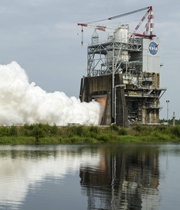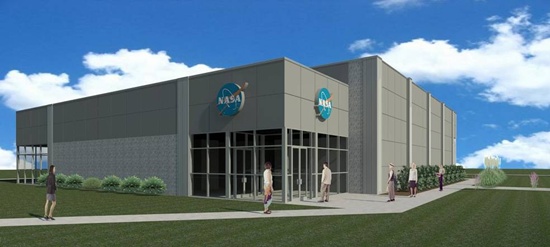NASA building new rockets, new launch pads for deeper space probes
29 Aug 2015
The National Aeronautics and Space Administration (NASA) is revving up for the next stage of deep space explorations with more powerful rockets and new launch command and control centres.
 The US space agency has been striving to manufacture more powerful and reliable launch vehicles after it retired the space shuttle following a series of accidents.
The US space agency has been striving to manufacture more powerful and reliable launch vehicles after it retired the space shuttle following a series of accidents.
NASA has completed the first developmental test series on the powerful RS-25 engines that will power the agency's new Space Launch System (SLS) rocket on missions deeper into space than ever before.
The series of tests using the RS-25 engine, a former space shuttle main engine operating at higher thrust levels, was designed to collect valuable data on performance in order to provide the power needed for the SLS vehicle, NASA said.
The data will aid in the development of a new engine controller, or ''brain,'' to monitor engine status and communicate programmed performance needs, NASA said.
The test series wrapped up on Thursday with a seventh hot fire test of a developmental RS-25 engine on the A-1 Test Stand at NASA's Stennis Space Center in Bay St Louis, Mississippi. The test ran for a full-duration 535 seconds.
''The completion of this test series is an important step in getting SLS ready for the journey to Mars,'' said Steve Wofford, engines manager at NASA's Marshall Space Flight Center in Huntsville, Alabama, where the SLS Programme is managed for the agency.
''The RS-25 engine gives SLS a proven, high performance, affordable main propulsion system. It is one of the most experienced large rocket engines in the world, with more than a million seconds of ground test and flight operations time.''
NASA is also building a new mission launch and command centre at the agency's flight facility in Wallops Islands, Virginia.The contract was awarded to Harkins Contracting Inc of Salisbury, Maryland.
The new 14,174 square-foot facility will serve as the hub for interfacing with and controlling rockets, their payloads and associated launch pad support systems during flight operations at Wallops.
''The Wallops launch range mission set has seen steady growth, transformation and diversification over the years,'' said Bill Wrobel, Wallops Flight Facility director. ''This new MLCC is a critical modernisation project that will meet the needs of our operations today and take us well into the future.''

NASA said recent operations like commercial cargo resupply flights to the International Space Station (ISS), Department of Defence missions, and NASA's Lunar Atmosphere and Dust Environment Explorer (LADEE), the first lunar mission to launch from Wallops, have underscored the need for new command center.
This contract involving asphalt and concrete paving, construction of storm water structures, extension of communications and electrical ducts, as well as connecting the facility to existing water, electric and sanitary systems, was, award to the firm at a fixed price of $5.6 million.
The Leadership in Energy & Environmental Design (LEED) Silver MLCC is a single-story facility that will be built on the main base of Wallops.
The launch command center currently in use was designed in the 1950s to accommodate discrete, quick-turnaround missions characteristic of the Wallops Range mission set at the time, which included Project Mercury tests and suborbital rocket flights.
''The current command center has served us well over the years, but doesn't have the capacity to meet the needs and requirements for advancing our nation's goals and objectives in space,'' said Wrobel.
Today, launch missions from Wallops embrace the facility's traditional role in testing new technologies along with enabling research and scientific investigations, in addition to taking on larger-scale operations using small- and medium-class solid- and liquid-fueled rockets.
As NASA's only launch range, the Wallops Range provides the operational environment required to ensure safe and successful flight operations for rockets, missiles, aircraft, unmanned aerial systems, and a variety of other mission types essential to the scientific, military and commercial use of space.













.jpg)






.jpg)









